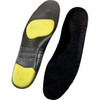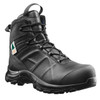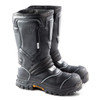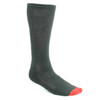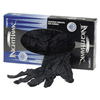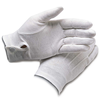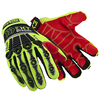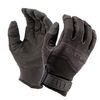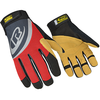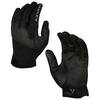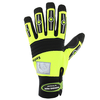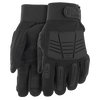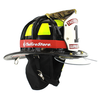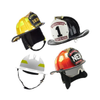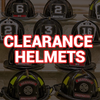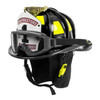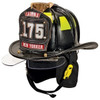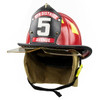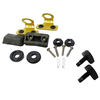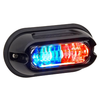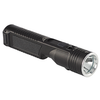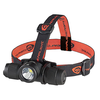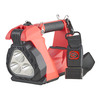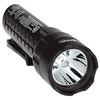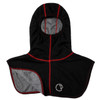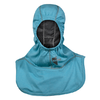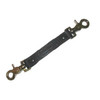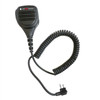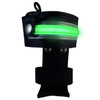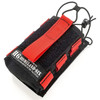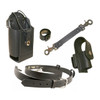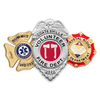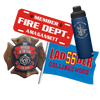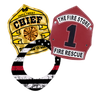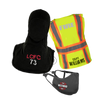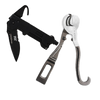Details
ATI’S JAFLINE HD is a synthetic, double-jacket fire hose.
Note: This item is excluded from shipping promotions. Additional shipping may apply.
JAFLINE HD has a rubber lining, offering excellent resistance to ozone. This synthesized rubber is also more resistant to abrasion and oxidation than natural rubber. The outside jacket is impregnated with a high-tech polymer, offering excellent resistance to moisture and abrasion. JAFLINE HD is available in lengths of 50 and 100 feet and can be coupled with NST, NPSH or other, special order couplings. Shorter lengths are available by special order.
| DIA | WT 50 FT COIL | COIL DIA | COUPLING BOWL SIZES |
| 1.5" | 13 lbs | 17" / 50' | 1 15/16 |
| 1.75" | 18 lbs | 18" / 50' | 2 â…› |
| 2" | 20 lbs | 20" / 50' | 2 â…? |
| 2.5" | 34 lbs | 21" / 50' | 3 |
| 3" | 42 lbs | 22" / 50' | 3 17/32 |
Jafline HD is a superior double-jacketed, rubber-lined highly durable and lightweight fire attack hose. It meets or exceeds performance requirements of NFPA 1961 Fire Hose Standard, 2007 edition.
Jacket Construction: The warp for the outer and inner jackets is premium grade, virgin spun polyester yarn, and the weft is high tenacity, low elongation polyester filament yarn. They meet all the hydrostatic requirements of this specification.
Hose is comprised of all synthetic fibers is much lighter in weight and more flexible than cotton-synthetic hose; therefore a greater amount can be stored in a given space. The outer jacket is thoroughly impregnated with a polymer compound to provide superior resistance to chemicals, abrasion and ultra-violet light. Compound is heat set at 250º F.
Lining: The synthetic rubber lining shall be a single-ply extruded tube, compounded to resist deterioration from ozone. No reclaimed material is used. The thickness is .040" for the 1 ½” and 1 3/4" and .049" to .058" for the 2”, 2 1/2" and 3”.
Shore hardness is 40 durometer on the "D" scale. The lining is adhered to the inside of the jacket by a calandered rubber backing stock of not less than .014” thickness, resulting in a smooth waterway surface, thus minimizing friction loss. The tensile strength of the liner shall not be less than 1600 psi, with an ultimate elongation of 400%.
Rubber-lined hose does NOT meet the requirements of NSF Standard 61, “Listed Drinking Water System Components – Health Effects,” and is therefore not suitable for potable water.
Adhesion: The rate of separation between the liner and inside jacket is such that 1.5" wide strip cut transversely, shall not be greater than 1" per minute over a period of ten minutes, under a weight of 16 pounds.
Accelerated Aging: Lining specimens subjected to an exposure of 158º F +/- 3.6 º F, for a duration of 96 hours shall be conditioned to ASTM D 573, Standard Test Method for Rubber – Deterioration in an Air Oven. Then, the specimens shall be tested to ASTM D4112, Standard Test Methods for Vulcanized Rubber and Thermoplastic Elastomers - Tension, Method A. Under evaluation, the tensile and elongation properties of the liner shall not be less than 75% of their initial values.
Couplings: Expansion-type in either hardcoat anodized aluminum or brass are available. The anodize process creates a hard aluminum oxide coating which improves the abrasion, corrosion and electrolysis resistance of the completed fitting, while also preventing excessive wear on the male and female threads. Storz couplings are available by special order. All couplings meet NFPA 1963, Standard for Fire Hose Connections, 2009 edition.
Abrasion Resistance: Outer jacket must withstand a minimum of 2,800 cycles on the Taber Abraser with no abrasion through the filler yarn. H-22 Calibrade wheel to be used with 1,000 gram load on each wheel. The hose shall also withstand Underwriters Laboratory Abrasion Test in UL 19, Lined Fire Hose and Hose Assemblies and the Abrasion Test defined in FM Class Number 2111, Factory Mutual Approval Standard for Fire Hose.
Hydrostatic Tests:
| Diameter | Pressure | Proof Test | Burst Pressure |
| 1.5" | 400 psi | 800 psi | 1200 psi |
| 1.75" | 400 psi | 800 psi | 1200 psi |
| 2" | 400 psi | 800 psi | 1200 psi |
| 2.5" | 400 psi | 800 psi | 1200 psi |
| 3" | 400 psi | 800 psi | 1200 psi |
All tests performed in compliance with NFPA 1961 Fire Hose Standard, 2007 edition and ASTM D-30, Standard Test Methods for Rubber Hose.
Cold Resistance: Hose shall have the capability of use down to -40 º F. There shall be no apparent damage to jacket or lining when subjected to the following cold bend test: A 3-foot section of hose shall be exposed to a temperature of -40 º F. for a period of 24 hours. At the end of the exposure period, the hose shall be rapidly bent 180 degrees back onto itself, first one way and then the other. Following this procedure, the hose shall not leak, nor show any damage to the jacket when subjected to the burst pressure shown above.
Heat Resistance: The ability of the hose to resist heat shall be verified using the test procedures defined in UL 19, Lined Fire Hose and Hose Assemblies, Heat-Resistance Test; FM Class Number 2111, Factory Mutual Approval Standard for Fire Hose, Heat Resistance.
Ozone Resistance: Hose liner shall show no signs of cracking under 7 power magnification when tested in accordance with ASTM D1149-86, Standard Test Methods for Rubber Deterioration-Cracking in an Ozone Controlled Environment (samples prepared in accordance with ASTM D518-86, Standard Test Method for Rubber Deterioration-Surface Cracking, procedure C). Specimen shall be elongated at 15% for 120 hours of exposure at 100 pphm ozone at a temperature of 122 º F
Marking: Beginning at a point not less than 5’ ± 6” from each end, each length shall be stenciled in letters at least one inch high with the manufacturer’s identification, country of origin, month and year of manufacture, and the words, “Service Test to 400 p.s.i. per NFPA 1962.”
Weights and Coil Sizes: 50' non-coupled lengths shall conform to the following averages:
| Hose Diameter | Weight | Coil Size | Consumed Space / ft3 |
| 1.5" | 15 lbs | 17" | 0.8 |
| 1.75" | 18 lbs | 18" | 0.85 |
| 2" | 29 lbs | 20" | 1.0 |
| 2.5" | 34 lbs | 21" | 1.3 |
| 3" | 41 lbs | 23" | 1.5 |
| FRICTION LOSS PER 100' | |||||
| G.P.M. | 1.5" | 1.75" | 2" | 2.5" | 3" |
| 60 | 7.2 | 3.5 | 1.4 | .48 | - |
| 70 | 9.9 | 4.7 | 1.9 | .54 | - |
| 80 | 13.1 | 6.2 | 2.5 | .83 | - |
| 90 | 16.8 | 8 | 3.2 | 1.1 | - |
| 100 | 21 | 9.6 | 4 | 1.3 | - |
| 125 | 32.3 | 15.1 | 6.2 | 2 | - |
| 150 | 47.5 | 21.3 | 8.9 | 2.9 | - |
| 175 | 65 | 39.2 | 12.4 | 4.1 | - |
| 200 | - | 40 | 16 | 3.2 | 1.7 |
| 250 | - | 60 | 24.8 | 8 | 3.4 |
| 300 | - | 35.1 | 11.8 | 4.6 | 4.6 |
| 350 | - | - | 49 | 15.4 | 6.2 |
Inspection and Care: NFPA advises users to develop a fire hose inspection and care program based on NFPA 1962, Standard for the Inspection, Care, and Use of Fire Hose, Couplings, and Nozzles and the Service Testing of Fire Hose, 2008 edition. Said program should also address the retirement of fire hose.


